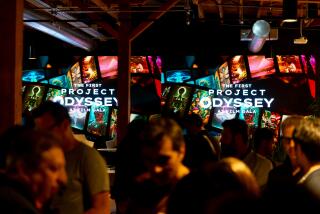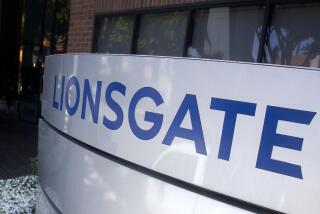From Films to Science
- Share via
Digital Productions, the Los Angeles firm that uses a supercomputer to help create three-dimensional graphics for movies and advertising, is pursuing more scholarly fields with more than $1 million in grants from the National Science Foundation. Its first completed project--a 10-minute film titled “Black Hole Hydrodynamics: Accretion Disk Formation”--is on the ponderous side compared with some of Digital’s earlier productions, which included special effects for the feature film “2010.” And the audience was certainly new: a conference of the International Astronomical Union in Copenhagen.
But in addition to making a scientific contribution, Digital says its participation in the science foundation’s supercomputer programs gives the company exposure as it attempts to expand outside entertainment into other industries.
“You go into the big corporate research labs and they’re harder to make a pitch to,” says Donald Thorp, vice-president in charge of Digital’s science and industry division, which employs about 25 of the company’s 85 employes. “This provides us with a lot of opportunity to show what we can do.”
Already, Thorp says the company has landed contracts with U.S. and European auto makers for design and styling, applying technology used in making “2010” to such projects as simulated wind-tunnel testing of the aerodynamic features of cars. He wouldn’t identify the companies.
The National Science Foundation film, which purports to graphically simulate what would happen when a liquid was introduced to a “black hole” in space, was done with John F. Hawley, a fellow at the California Institute of Technology in Pasadena, under a $70,000 science-foundation grant.
Privately held Digital Productions is also using its Cray X-MP supercomputer for science-foundation projects to create high-resolution “radio maps” from radio image data and graphic simulations in meteorology and galaxy formation.
Thorp said Digital’s science-foundation grant authorizations for 1986 have climbed to more than $1 million from this year’s $400,000. The company’s sales, meanwhile, are about on target with its earlier 1985 forecast of $10 million, he said.
More to Read
The biggest entertainment stories
Get our big stories about Hollywood, film, television, music, arts, culture and more right in your inbox as soon as they publish.
You may occasionally receive promotional content from the Los Angeles Times.










